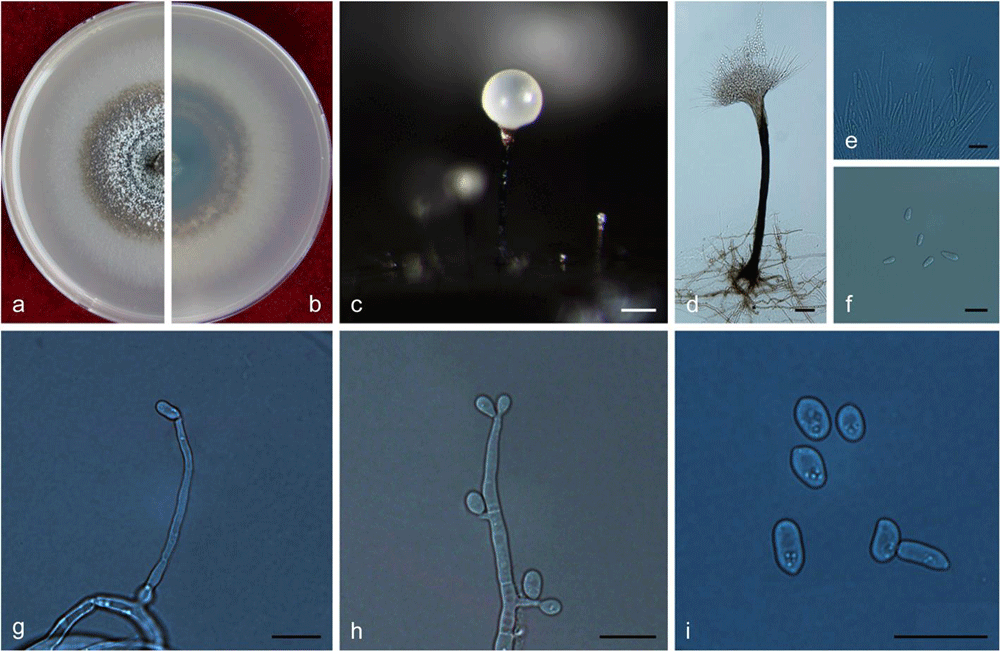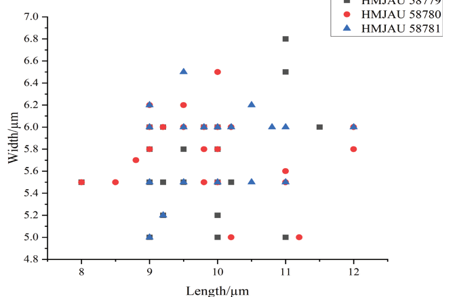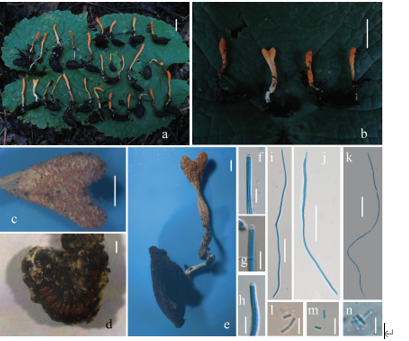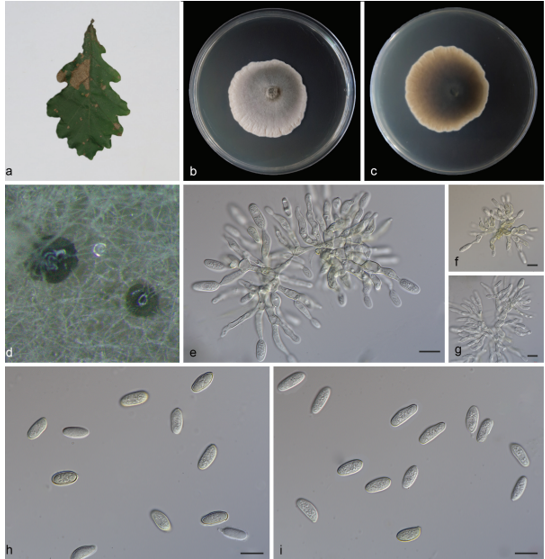Ophiostoma multisynnematum Z. Wang & Q. Lu 2020
MycoBank MB 830614
Holotype: China: Inner Mongolia Autonomous Region, Genhe, from Ips subelongatus infesting Larix gmelinii, Sept. 2017, Q. Lu (CXY 2003 – holotype; CFCC 52677 – ex-type culture).
Morphological description
Sexual morph not observed. Asexual morphs: pesotum-like and hyalorhinocladiellalike. Pesotum-like morph: synnemata occurring singly or in groups, the base black, (11–) 12.5–43.5 (− 73) μm wide, (256–) 307–433 (− 544) μm tall including conidiogenous apparatus. Conidiogenous cells (12–) 17.5–31.5 (− 45) × 1.5–2 (− 2.5) μm. Conidia hyaline, smooth, cylindrical, aseptate, 5.5–7 (− 8.5) × (2–) 2.5–3 (− 3.5) μm. Hyalorhinocladiella- like morph: conidiogenous cells arising from superficial hyphae, (9–) 13–33.5 (− 50.5) × (1.5–) 2–2.5 (− 3) μm. Conidia hyaline, smooth, ovate to cylindrical, aseptate, (4–) 4.5–5.5 (− 6.5) × 2.5–3.5 (− 4.5) μm. Cultures: Colonies on 2% MEA at 25 °C reaching 78mm in diameter in 10 d, initially hyaline, thinning radially toward the margin, later becoming dark olivaceous and massive synnemata arising in the centre; hyphae superficial, aerial mycelium sparse. Optimal temperature for
Habitat: L. gmelinii pure plantation.
Ecology: Isolated from Ips subelongatus infesting dying Larix gmelinii and stock log.
Distribution: Inner Mongolia Autonomous Region, China.
GenBank Accession: ITS/LSU MK748196; β-tubulin gene MN896048; EF-1α MN896071; calmodulin gene MN896103
Notes: Ophiostoma multisynnematum and O. genhense formed two distinct, well-supported clades within the O. piceae complex, in which they were closely related to O. breviusculum (Chung et al. 2006). They can be both differentiated from O. breviusculum by the presence of a hyalorhinocladiella-like asexual state, which is absent in the latter.
Reference: Wang Z, Liu Y, Wang HM et al. (2020) Ophiostomatoid fungi associated with Ips subelongatus, including eight new species from northeastern China

Ophiostoma multisynnematum Morphological characteristics of O. multisynnematum (CFCC 52677). a–b. Ten-day-old cultures on 2% MEA; c– d. Pesotum-like asexual morph; e–f. Conidiogenous cells of pesotum-like asexual morph and conidia; g–i. Hyalorhinocladiella-like asexual morph: conidiogenous cells and conidia. Scale bars: c = 50 μm; d = 20 μm; e–i = 10 μm









